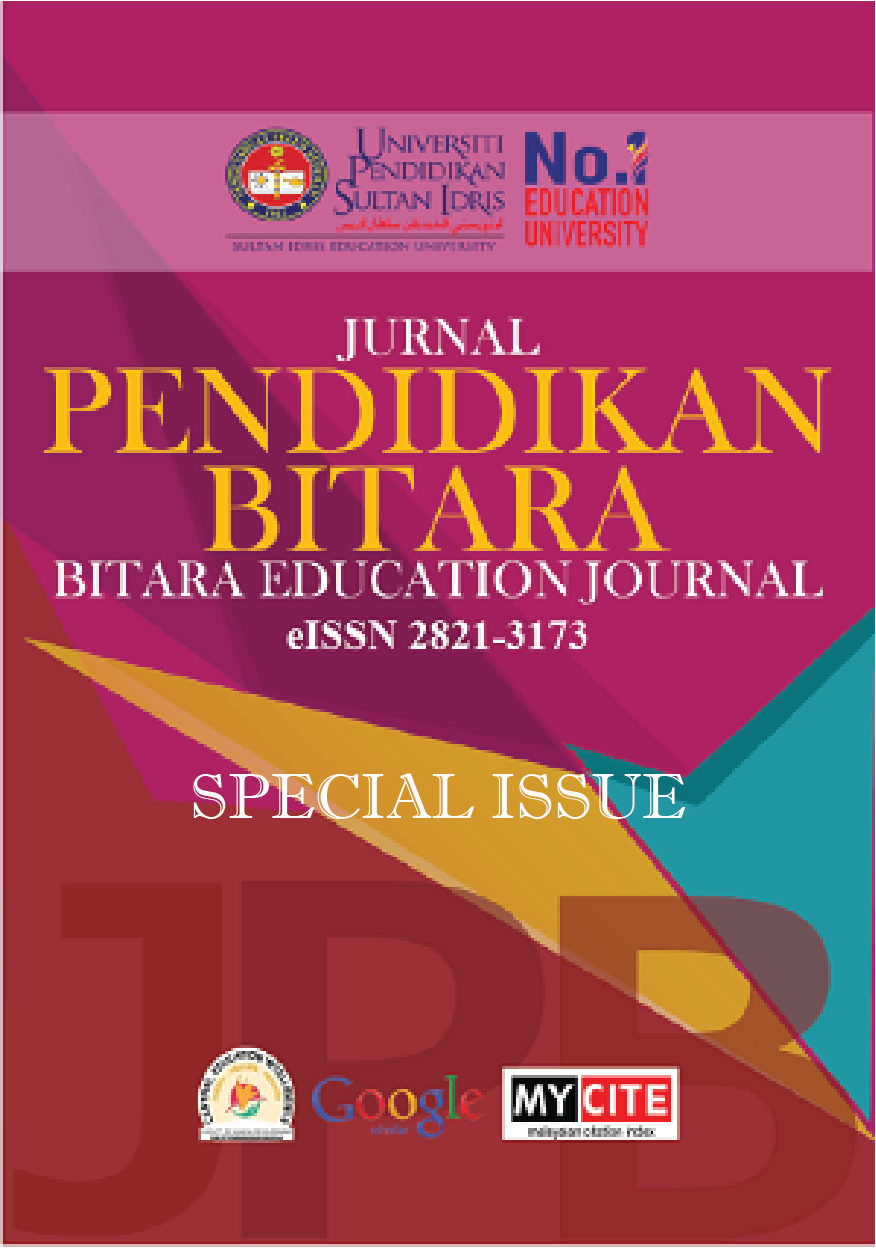Improving the Skills of Recognizing 2D and 3D Shapes in Early Mathematics Learning Through "The use of Existing Materials" in Preschool Pasti Al-Husna Hulu Bernam
Meningkatkan Kemahiran Mengenal Bentuk 2D dan 3D dalam Pembelajaran Matematik Awal Melalui “Penggunaan Bahan Maujud” di Prasekolah Pasti Al-Husna Hulu Bernam
DOI:
https://doi.org/10.37134/bitara.vol15.sp.15.2022Keywords:
Practical Activity, Action Study, 4 Year Old Children, 2 Dimensional and 3 Dimensional ShapesAbstract
This study aims to explore teachers' best practices for learning practical activities in preschool classes. This study was conducted to improve preschool children's understanding of the types of 2-dimensional and 3-dimensional shapes by using existing materials. The target group for this researcher's study is a total of 3 students aged 4 years from Pasti Al-Husna Preschool, Hulu Bernam, Selangor. The problem found in this class is that the students still do not recognize the types of shapes in the initial concepts of mathematics. The objective of the study is to find an effective method of teaching early math concepts to recognize the types of 2D and 3D shapes among 4-year-old children using learning activities using existing materials. The research design is Action Research using qualitative methods. The method used is with existing materials in teaching and learning activities planned by the researcher. The collection of data for this study was obtained through observation, namely work results, Anecdotal Records and photographs. Data were analyzed using Microsoft Words. The implementation of the study is through 4 phases of the study, namely planning, acting, implementing and reflecting. The findings of the study have proven that the use of existing materials can attract the interest of study participants to learn shapes and can apply the form of learning using existing materials with surrounding shapes. The reflection of the study shows that teaching through activities using existing materials can attract children's attention and arouse enthusiasm for learning among students. In general, this study can simplify the task of educators and increase children's enthusiasm to learn 2-dimensional and 3-dimensional shapes that they enjoy.
Downloads
References
Awang, M. M., Ahmad, A. R., Wahab, J. L. A., & Mamat, N. (2013). Effective teaching strategies to encourage learning behaviour. IOSR Journal, 8(2), 35-40.
Awang, M. M., Ahmad, A. R., & Ali, M. M. (2013). Professional teachers' strategies for promoting positive behaviour in schools. Asian Social Science, 9(12), 205.
Connie chin & Juppri Bacotang. (2019). Kesan Kaedah Mengajar Terhadap Pencapaian Awal Matematik dalam kalangan kanak-kanak prasekolah. Jurnal Pendidikan Awal Kanak- kanak kebangsaan, Vol, 8, 8-16
Nor Anita Megat M. Nordin(2015).Melatih Kemahiran Matematik di Usia Prasekolah. Diperolehi 15 November 2020 dari https://awal.my/melatih-kemahiran-matematik-diusia-prasekolah/ hands-on │ translate English to Malay: Cambridge Dictionary (n.d). Diperoleh 20 Oktober 2020 dari https://dictionary.cambridge.org/dictionary/english-malaysian/hands-on
Nurafida . (n.d) Montessori-Dunia Pendidikan Kanak-Kanak. Diperoleh 25 Oktober 2020 dari http://nurafida.weebly.com/montessori.html
Nazirand Abdul Kadir, Zaharilah and Liew, Fee LanFaridah. (2018). Masalah pembelajaran spesifik: disleksia, diskalkulia, disgrafia.
Rakwi, N. S. H., Shafie, S., & Syed Ali, S. A. (2021). Teachers’ Understanding and Practices on The Applications of 21st Century Learning in Secondary School Mathematics in Miri, Sarawak. Jurnal Pendidikan Bitara UPSI, 14, 60-71.
Siswandari . (2009).Pengertian Data Kuantitatif dan Kualitatif serta Contohnya.Diperoleh 15 november,2020 dari https://www.advernesia.com/blog/data-science/pengertian-datakuantitatif-dan-kualitatif-serta contohnya/





